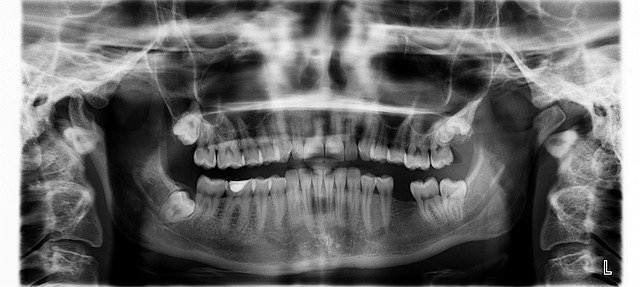Understanding Amyloidosis and How It Affects the Body
Amyloidosis is a condition in which abnormal proteins build up in organs and tissues. Depending on the type and area affected symptoms may vary from fatigue to swelling or shortness of breath. This summary outlines key signs and diagnostic considerations for awareness.

What Are the Early Signs of Amyloidosis Symptoms?
The early signs of amyloidosis symptoms can be subtle and easily mistaken for other common health issues. Patients often experience persistent fatigue that doesn’t improve with rest, unexplained weight loss, and general weakness. Swelling in the ankles, legs, or abdomen may occur due to protein deposits affecting the kidneys or heart. Shortness of breath, especially during physical activity, can indicate cardiac involvement. Other early warning signs include changes in skin texture, such as thickening or bruising easily, numbness or tingling in the hands and feet, and digestive issues like diarrhea or constipation. Many patients also report feeling full quickly when eating, which can be related to organ enlargement caused by amyloid deposits.
How Amyloid Buildup Affects Organs
How amyloid buildup affects organs depends largely on where these abnormal proteins accumulate and the extent of the deposits. The heart is commonly affected, leading to restrictive cardiomyopathy where the heart muscle becomes stiff and unable to pump blood effectively. This can result in heart failure, irregular heartbeats, and potentially life-threatening complications. When amyloids deposit in the kidneys, they can cause proteinuria, where excess protein is found in urine, eventually leading to kidney failure if left untreated. The nervous system can also be significantly impacted, with deposits causing peripheral neuropathy, carpal tunnel syndrome, or in severe cases, autonomic dysfunction affecting blood pressure regulation and digestive processes. Liver involvement may cause organ enlargement and affect the body’s ability to produce essential proteins and process toxins.
When to Seek a Medical Evaluation
Knowing when to seek a medical evaluation is critical for preventing irreversible organ damage. You should consult a healthcare professional immediately if you experience persistent swelling in your extremities that doesn’t respond to rest or elevation, unexplained shortness of breath, or chest pain. Any combination of fatigue, weight loss, and digestive issues lasting more than a few weeks warrants medical attention. If you notice changes in your heart rhythm, difficulty swallowing, or significant changes in urination patterns, these could indicate organ involvement requiring urgent evaluation. Family history of amyloidosis also increases your risk, so discussing any concerning symptoms with your doctor becomes even more important. Early intervention can significantly improve outcomes and quality of life.
Differences Between Amyloidosis Types
Understanding the differences between amyloidosis types helps explain why symptoms and treatment approaches can vary significantly. AL amyloidosis, the most common form, occurs when plasma cells in the bone marrow produce abnormal light chain proteins. This type typically affects the heart, kidneys, liver, and nervous system. AA amyloidosis develops secondary to chronic inflammatory conditions like rheumatoid arthritis or inflammatory bowel disease, most commonly affecting the kidneys and digestive tract. Hereditary amyloidosis results from genetic mutations that cause the production of abnormal proteins, with ATTR being the most common hereditary form affecting the heart and nervous system. Wild-type ATTR amyloidosis occurs without genetic mutations and primarily affects older adults, particularly targeting cardiac tissue. Each type requires different diagnostic approaches and treatment strategies.
Overview of Diagnostic Test Options
An overview of diagnostic test options reveals the comprehensive approach needed to confirm amyloidosis and determine its type. Initial blood tests check for abnormal protein levels, kidney function, and liver enzymes. Urine tests can detect excess light chain proteins that may indicate AL amyloidosis. Cardiac testing includes echocardiograms to assess heart structure and function, electrocardiograms to detect rhythm abnormalities, and sometimes cardiac MRI for detailed imaging. Tissue biopsy remains the gold standard for diagnosis, with samples typically taken from affected organs or more accessible sites like abdominal fat or bone marrow. Advanced imaging techniques such as DaTscan or PYP scans can help identify specific types of cardiac amyloidosis without invasive procedures. Genetic testing may be recommended if hereditary forms are suspected, particularly when there’s a family history of the condition.
Treatment Approaches and Management Strategies
Treatment for amyloidosis focuses on stopping or slowing the production of abnormal proteins while managing organ-specific symptoms. For AL amyloidosis, chemotherapy-like treatments target the abnormal plasma cells producing misfolded proteins. Medications such as melphalan, bortezomib, and lenalidomide are commonly used, sometimes in combination with autologous stem cell transplantation for eligible patients. AA amyloidosis treatment primarily involves controlling the underlying inflammatory condition through anti-inflammatory medications and biologics. For hereditary forms, newer treatments like tafamidis can help stabilize abnormal proteins, while gene silencing therapies such as patisiran and inotersen show promising results. Supportive care includes managing heart failure with diuretics and ACE inhibitors, treating neuropathy symptoms, and providing nutritional support. Regular monitoring through blood tests, imaging, and cardiac assessments helps track treatment response and adjust management strategies accordingly.
Amyloidosis represents a complex group of diseases that require prompt recognition and specialized care. While the condition can be challenging to diagnose due to its varied presentations, understanding the early warning signs and knowing when to seek medical evaluation can make a significant difference in outcomes. With advances in diagnostic techniques and treatment options, many patients can achieve better quality of life and slowed disease progression when amyloidosis is identified and treated early.
This article is for informational purposes only and should not be considered medical advice. Please consult a qualified healthcare professional for personalized guidance and treatment.




